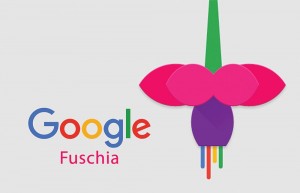Google Fuschia

Google is solely developing a new operating system, but here is the thing: it’s unclear at the moment what this operating system is for, including what devices it might power. Explore this article and know about the Google’s new project Fuchsia.
GOOGLE FUCHSIA: WHAT IS IT?
Fuchsia is a developing pile of code. Users can find it on the search giant’s code depository and on GitHub. The code is purportedly the early beginnings of an entirely new operating system, though Google has yet to confirm those details. Curiously, it’s not based on Linux Kernel – the core underpinnings of both Android (Google’s mobile OS) and Chrome OS (Google’s desktop and laptop OS).
GOOGLE FUCHSIA: HOW DOES IT LOOK LIKE?
Fuchsia has already has an early user interface with a card-based design, according to Ars Technica, which posted a video and images of the yet-to-be-announced software. The interface is reportedly called Armadillo. It was first discovered by Kyle Bradshaw at Hotfix.
Unlike Android OS or Chrome OS, both of are based on Linux, Fuchsia is built on Magenta, a new kernel created by Google. Armadillo is built in Google’s Flutter SDK, which is used to create cross-platform code which is capable of running on multiple operating systems. With Armadillo, different cards can be dragged around for use in a split-screen or tabbed interface.
The current thought is that Fuchsia is a new OS that could unify Chrome OS and Android into a single operating system (something that’s been heavily speculated since 2015. Reports have claimed that OS will be released in 2017).
Google’s own documentation describes the software is targeting “modern phones and modern personal computers” with “fast processors” and “non-trivial amounts of RAM.”
Fuchsia is also built on Magenta, a “medium-sized microkernel” based on a project called LittleKernel. The two developers have listed on Fuchsia’s GitHub page – a senior software engineer at Google and a former engineer on Android TV and Nexus Q – are well-known experts in embedded systems.
Furthermore, Google’s documentation notes Magenta supports user modes, graphics rendering, and “capability-based security model”. Although all this points to Fuchsia being an OS for Wi-Fi connected gadgets, Google already has an IoT platform called Android Things. Also, Ars Technica has compiled the Armadillo system UI, and it seems like Fuchsia is intended to be a smartphone or tablet OS.
GOOGLE FUCHSIA: IS IT GOING TO REPLACE ANDROID?
Android is perforated with problems that Google has yet to fix. Firstly, there’s fragmentation caused by hundreds of different devices from dozens of manufacturers using different, tweaked versions of Android rather than the latest, version. Secondly, there’s an update problem. Google has an annual release which is scheduled for Android updates, but it takes about four years for an update to fully flood the ecosystem.
Google could not decide to push Android direct to these devices if any modifications and tinkering has been done – another problem is that Android is based on Linux.
Linux is not only old but it also has many legal issues – and subsequent licensing fees from Android hardware OEMs eat away at profit margins. The Linux kernel was also not originally designed for smartphones and IoT devices, and yet the kernel’s been completely tweaked and loaded onto those devices, creating a prime environment for bugs and vulnerabilities to grow.
FUCHSIA’S CORE CODE IS DESIGNED TO BE LIGHTWEIGHT:
The Magenta kernel can do a lot more than just power a router. Google’s own documentation says the software “targets modern phones and modern personal computers” that use “fast processors” and “non-trivial amounts of RAM.” It notes that Magenta supports a number of advanced features, including user modes and a “capability-based security model.”
This is just speculation for now, and the only real description we have of Fuchsia is what it says at the top of the GitHub page: “Pink + Purple == Fuchsia (a new Operating System).” The question of why the project would be revealed in this way is also confusing, although when it is stressed on the subject, Swetland reportedly said: “The decision was made to build it open source, so it might start from the beginning.”
Well, we’ve certainly got the beginning of Fuchsia, but where it goes next isn’t clear. From what we can see, it’s currently being tested on all sorts of systems. Swetland says it’s “booting reasonably well” on small-form factor Intel PC’s, while another Google developer involved in the project, Travis Geiselbrecht, says they’ll soon have support for the Raspberry Pi 3. At this rate, it looks like Fuchsia will be popping up all over the place.

